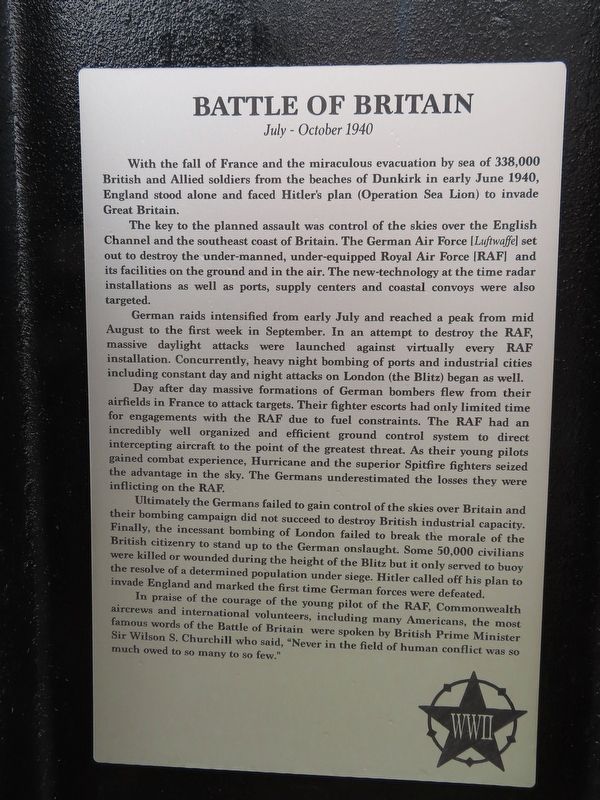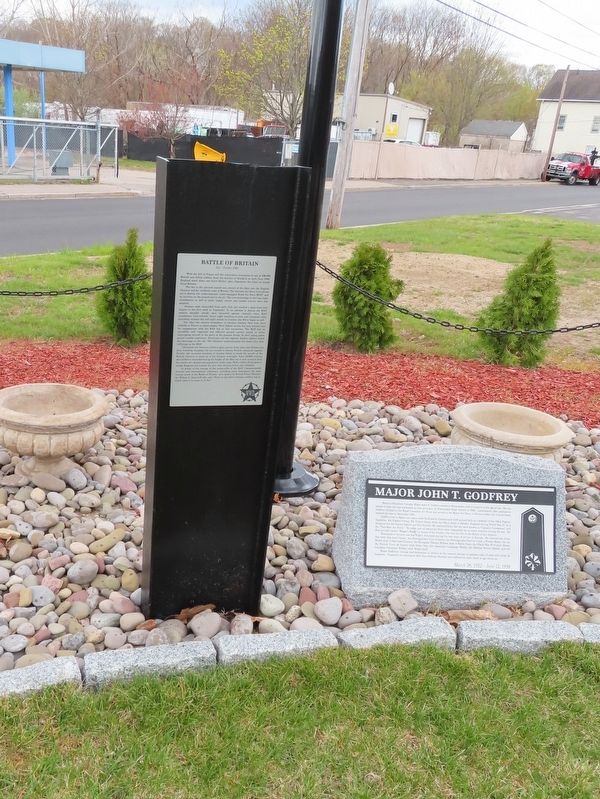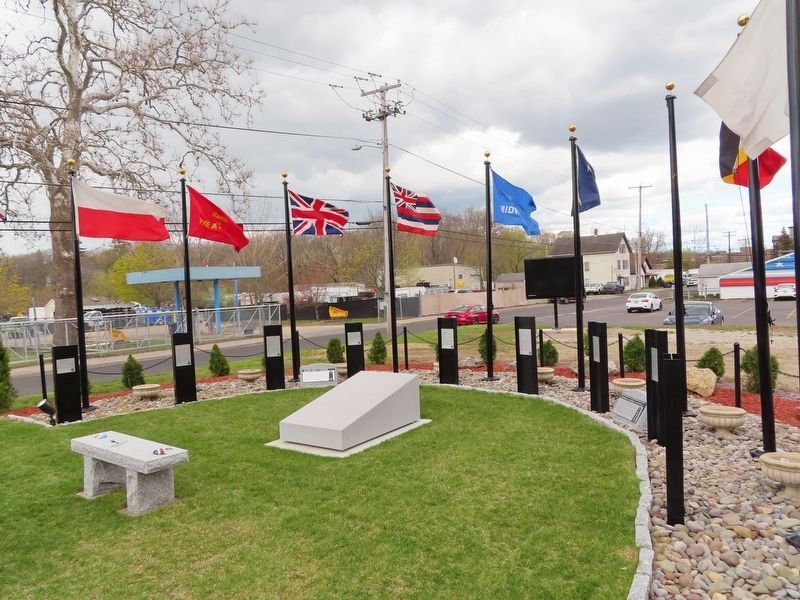Woonsocket in Providence County, Rhode Island — The American Northeast (New England)
Battle of Britain
July - October 1940
The key to the planned assault was control of the skies over the English Channel and the southeast coast of Britain. The German Air Force (Luftwaffe) set out to destroy the under-manned, under-equipped Royal Air Force (RAF) and its facilities on the ground and in the air. The new-technology at the time radar installations as well as ports, supply centers and coastal convoys were also targeted.
German raids intensified from early July and reached a peak from mid August to the first week in September. In an attempt to destroy the RAF, massive daylight attacks were launched against virtually every RAF installation. Concurrently, heavy night bombing of ports and industrial cities including constant day and night attacks on London (the Blitz) began as well.
Day after day massive formations of German bombers flew from their airfields in France to attack targets. Their fighter escorts had only limited time for engagements with the RAF due to fuel constraints. The RAF had an incredibly well organized and efficient ground control system to direct intercepting aircraft to the point of the greatest threat. As their young pilots gained combat experience, Hurricane and the superior Spitfire fighters seized the advantage in the sky. The Germans underestimated the losses they were inflicting on the RAF.
Ultimately the Germans failed to gain control of the skies over Britain and their bombing campaign did not succeed to destroy British industrial capacity. Finally, the incessant bombing of London failed to break the morale of the British citizenry to stand up to the German onslaught. Some 50,000 civilians were killed or wounded during the height of the Blitz but it only served to buoy the resolve of a determined population under siege. Hitler called off his plan to invade England and marked the first time German forces were defeated.
In praise of the courage of the young pilot of the RAF, Commonwealth aircrews and international volunteers, including many Americans, the most famous words of the Battle of Britain were spoken by British Prime Minister Sir Wilson S. Churchill who said, "Never in the field of human conflict was so much owed to so many to so few."
Topics. This memorial is listed in this topic list: War, World II. A significant day of the year for for this entry is May 31.
Location. 42° 0.444′ N, 71° 31.695′ W. Marker is in Woonsocket, Rhode Island, in Providence County. Memorial is on River Street north of 2nd Avenue, on the left when traveling north. Located next to American Legion Fairmount Post 85. Touch for map. Marker is at or near this postal address: 870 River Street, Woonsocket RI 02895, United States of America. Touch for directions.
Other nearby markers. At least 8 other markers are within walking distance of this marker. Major John T. Godfrey (here, next to this marker); Pearl Harbor (here, next to this marker); Battle of the Atlantic (here, next to this marker); Battle of Midway (here, next to this marker); World War II Begins (here, next to this marker); General George S. Patton, Jr. (here, next to this marker); D-Day (here, next to this marker); Battle of Stalingrad (here, next to this marker). Touch for a list and map of all markers in Woonsocket.
Credits. This page was last revised on May 6, 2022. It was originally submitted on May 6, 2022, by Michael Herrick of Southbury, Connecticut. This page has been viewed 65 times since then and 5 times this year. Photos: 1, 2, 3. submitted on May 6, 2022, by Michael Herrick of Southbury, Connecticut.


